We’re Enamored With the Design in Ripley —Here Are Our Top 5 Favorite Details From the Thrilling Netflix Series

- Oops!Something went wrong.Please try again later.
Courtesy of Netflix
It’s been 25 years since a mysterious grifter from New York graced the screen in the cult classic The Talented Mr. Ripley. Now, Netflix’s new eight-episode adaptation Ripley retells the same saga based on author Patricia Highsmith’s 1955 psycho-thriller novel. Set in the early 60s, the adaptation finds charismatic con man Tom Ripley (played this time by Andrew Scott) hired by a wealthy shipping magnate to bring back his son Richard a.k.a. “Dickie” Greenleaf (Johnny Flynn) who is on a permanent vacation in Italy. Ripley eventually finds Dickie and assumes his identity, belongings, and money as he delves into a world of forgery, identity theft, and murder. As Ripley says in the book, “I always thought it would be better to be a fake somebody than a real nobody.”
Credit production designer and two-time Oscar nominee David Gropman, set decorator Alessandra Querzola, director Steven Zaillian, and cinematographer Robert Elswit for creating the stunning interiors and captivating black-and-white cinematography that transports viewers to early ’60s Italy. Below, AD shares five stunning moments from the sets of the series.
Picasso and the art of character development
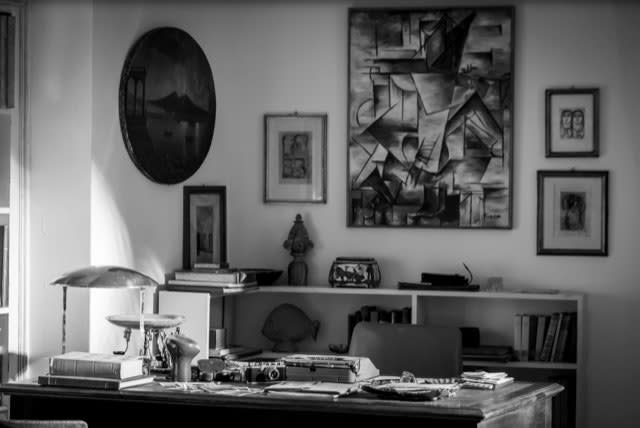
Picasso’s The Guitarist first graces the walls of Dickie’s idyllic 1902 villa, adorned with twisted columns in Atrani. Eventually stolen by Ripley, it makes an appearance at the end of the series in his Venice palazzo. The monochromatic Cubist painting serves as a reflection of his fragmented psyche, mirroring Ripley’s multifaceted personas and need for power and money. Dating back to 1910, the masterpiece also embodies a lavish lifestyle of la dolce vita.
And for viewers who wonder if the Picasso is real and on loan, Gropman pulls back the curtain, explaining, “It was Steven’s notion to do Picasso, and we looked at a lot of paintings but only from that very abstract period. We received a digital copy from the estate and my designers were able to make a copy, paint over the canvas to make sure it had the quality of the paint strokes, and after filming we had to destroy it.” In a stroke of luck, the production designer discovered the artist Franco Gentili’s work at a framer’s shop on a little alley street in Rome and fell in love with it. Since the work is very much in the style of Picasso, several of Gentili’s paintings were in perfect company on the walls of Dickie’s villa.
Black, white, and shades of gray
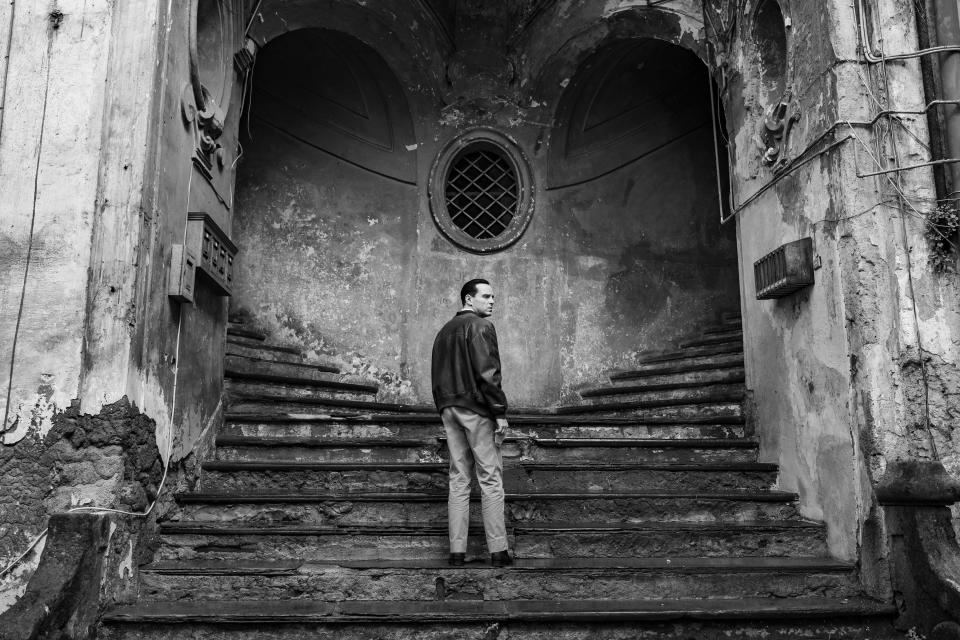
RIPLEY
Perhaps one of the primary distinctions between The Talented Mr. Ripley and Ripley is that the latter is filmed in a period-defining and sometimes ominous black and white. “It was something I have always wanted to do, especially for a period film. You start with the research mostly in black and white and you look at those amazing images,” says Gropman on his design process. “My philosophy is to erase myself from the equation and become the world the story takes place in.” The designer scouted with his iPhone, snapping research and location photographs, and adjusting them to black and white to see where things needed to be changed. He found inspiration in the book Neo Realismo: The New Image in Italy 1932-1960, along with the work of photographers such as Pietro Donzelli, Bert Hardy, Herbert List, and Mario Cattaneo.
Filming in black and white provides the picture-perfect backdrop for the incredible Italian façades overlooking the sea and the aged stucco buildings in Rome, and even the staid Brooks Brothers store in New York takes on a different tone in monochrome. Beautifully filmed by Oscar-winning cinematographer Robert Elswit, the overall feel is one of 1940s film noir, creating a sense of heightened suspense at every corner.
The symbolic contrast of Caravaggio
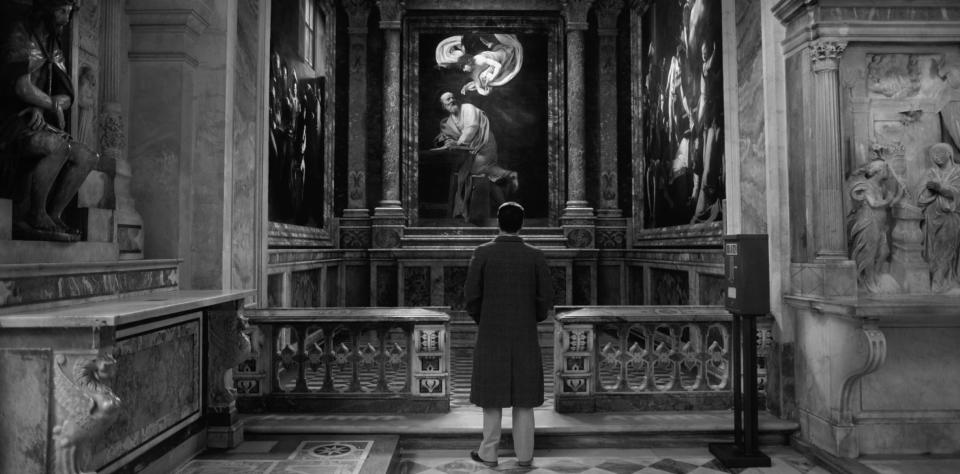
Since the show features a black-and-white palette, it’s only fitting that the contrasts of light and dark enter the equation, serving as moments of synchronicity. At the suggestion of Dickie, Ripley is introduced to the works of 16th and 17th century Italian Baroque artist Caravaggio on a tour of the Galleria Borghese in Rome and at the Oratory of San Lorenzo in Palermo, where the artist’s nativity painting was stolen from the chapel in the ’60s (and replaced with a reproduction).
The master of light and dark (known as chiaroscuro) was famous for his religious-themed portraits where the subject’s faces are highlighted. Ripley becomes naturally fascinated when he learns the artist is renowned for killing a man in a street brawl in Rome. Some of Carvaggio’s art in the series includes The Seven Works of Mercy (1607), David With the Head of Goliath (1610), and The Crucifixion of Saint Peter (1600).
Midcentury modern meets Italian antiques
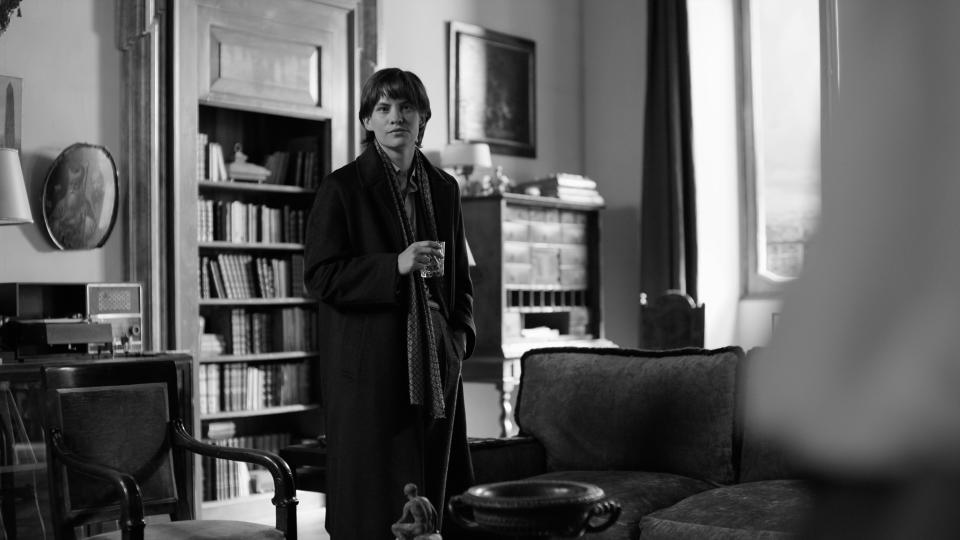
RIPLEY
Ripley’s Venice palazzo was filmed in the Palazzo Contarini Polignac, known for its grandeur and contemporary art gallery. “It has a wonderful history and was quite spectacular,” says Gropman of the early renaissance building. The designer researched numerous villas in Italy to get a sense of the size of the rooms and how they should look, the style of the architecture, and design details such as the type of moldings. The grand interiors include massive chandeliers, tall ceilings, and an imposing canopy bed, which makes a statement along with the Italian damask covered walls.
For Ripley’s Rome rental, “The apartment [built on a studio soundstage at Cinecittà] comes furnished except for a certain ash tray and Dickie’s art in the corner. There are beautiful Italian paintings and furniture mixed with a mid-century console for his record player and albums,” says Gropman. And nothing says ’60s vibe like a rotary dial telephone, parquet floors, and a bar cart.
Dickie’s twisted villa on the the Amalfi Coast
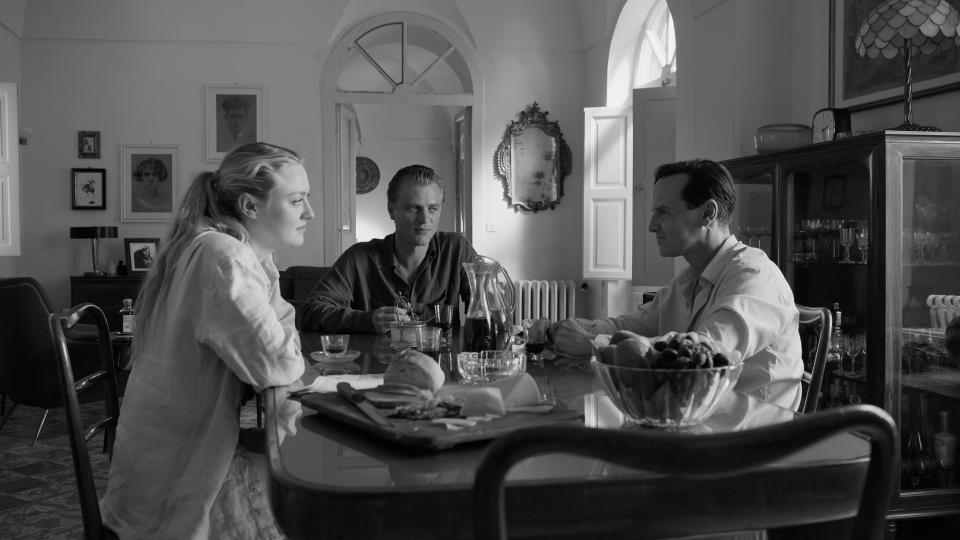
RIPLEY
The Villa Torricella on the island of Capri (doubling as the town of Atrani, which no doubt will see a rise in tourism due to the popularity of the series) is Dickie’s home, a retreat where his girlfriend Marge Sherwood (Dakota Fanning) lives nearby and works on her travel book while he paints abstract portraits. With the Tyrrhenian Sea and the Gulf of Naples as a picturesque backdrop of the Gulf of Naples, the palazzo is a stark contrast to Ripley’s Roman digs.
The white stucco villa, with its mix of lemon and olive trees, spectacular gazebo, and wisteria-wrapped pergolas, is available to rent on AirBnB. On screen, the interiors are filled with artwork (the centerpiece being the Picasso) and since Dickie is an aspiring artist, a paint and canvas filled studio is an essential set. The décor is part bohemian and part Italian luxe, complete with vaulted ceilings, colorful tiles, Moorish colonnades, arches, and twisted columns.
Originally Appeared on Architectural Digest
More Great Celebrity Style Stories From AD
Inside Benny Blanco’s Eclectic LA Home, Which Doubles as Hollywood’s Favorite Hangout
Windsor Castle: Inside the 1,000-Year-Old History of the Royal Residence
20 Years After Mean Girls, Regina George’s Bedroom Still Reigns Supreme
Inside Bad Bunny’s Houses: Tour Where the Latin Superstar Lives
Not a subscriber? Join AD for print and digital access now.
Browse the AD PRO Directory to find an AD-approved design expert for your next project.

